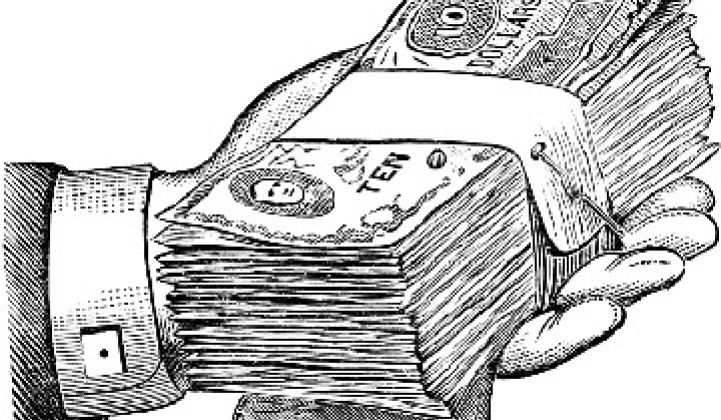Don't count Nanosolar out of the thin film solar competition just yet.
The firm just closed on another $70 million in VC funding to allow its CIGS thin-film photovoltaic factory to continue to scale and improve.
A release from the company describers the round as "over-subscribed" with funding from existing investors and new investors including OnPoint Technologies, Inc., Mohr Davidow Ventures, and Ohana Holdings.
Nanosolar received a small $20 million sum earlier this year from existing investors along with new investor Aeris CAPITAL. (Aeris is a Zurich, Switzerland-based family fund. And the interesting piece here is that Erik Oldekop of Aeris CAPITAL was a Managing Director at Nanosolar from 2006 to May 2011. It's a connection that can be interpreted in a variety of ways -- he's likely still a personal shareholder in Nanosolar, but he also knows its dark secrets and angelic potential.)
“We believe solar printing is the future of low-cost harvesting of solar energy,” said Oldekop in an earlier press release.
Nanosolar prints CIGS inks on aluminum foil in a roll-to-roll process without using high-vacuum manufacturing equipment.
Nanosolar has had some recent personnel shifts. Brian Stone, a VP at Nanosolar, left the firm. Geoff Tate, CEO for about two years, was replaced by Eugenia Corrales. John Rayfield, VP of Worldwide Marketing, also left the firm recently.
Nanosolar has had a history of technical and commercial promises, most recently these relating to cost:
- Below $1.00 per watt factory cost by the end of 2011
- Low $0.80s or high $0.70s per watt by late 2012
- In the $0.60s in 2013
- Below $0.60 per watt in 2014
Nanosolar produced 2.5 megawatts of panels in 2010. The firm has only shipped a cumulative total of 10 megawatts in its history.
The firm has suggested that it will ship megawatts measuring in the "triple digits" in 2012. Cell production capacity was to be 115 megawatts at the end of 2011, and the next step jumps the firm to 250 megawatts of cell capacity at the San Jose facility. Panel assembly is performed at Nanosolar's factory in Luckenwalde, Germany.
The firm is shipping 10-percent-efficiency panels today, with a target of 12 percent efficiency this year. Expectations are for 13 percent in 2013 and 14 percent in 2014. However, attaining a 4-percentage-point increase in efficiency in the space of four years would be an unprecedented feat never before achieved by any solar firm.
The company is focused solely on utility-scale deployments. Its large utility-size panels are currently rated at 200 watts, with additional output gains expected as efficiency rises.
Nanosolar also announced that it has signed long-term supply agreements for up to one gigawatt of PV panels with Belectric of Kolitzheim, Germany; EDF Energies Nouvelles of Paris, France; and Plain Energy of Munich, Germany.
Take that "long-term supply agreement" lingo with a grain of salt, however. These contracts are not binding, are not take-or-pay, and are predicated on Nanosolar's ability to achieve its cost and efficiency targets as promised. Still, although those agreements don't translate as real backlog, they do translate to patient customers who appear willing to work with Nanosolar. Nanosolar, as a new supplier without a field performance track record, employs module warranty insurance to help financiers and customers feel comfortable and improve the firm's bankability.
Ed Gunther reported on a number of other promises made by the company at a recent solar event.
An investor in Nanosolar I spoke with recently still maintains that Nanosolar is one of the few firms that can give First Solar and the Chinese c-Si vendors a run for their money in terms of cost per watt.



